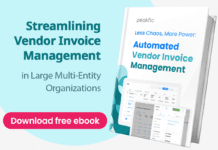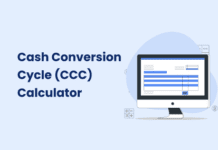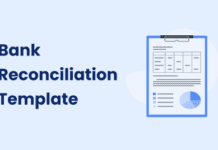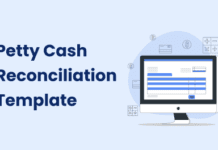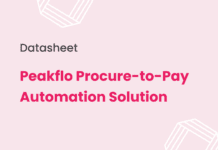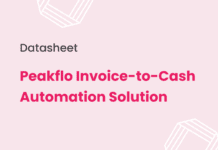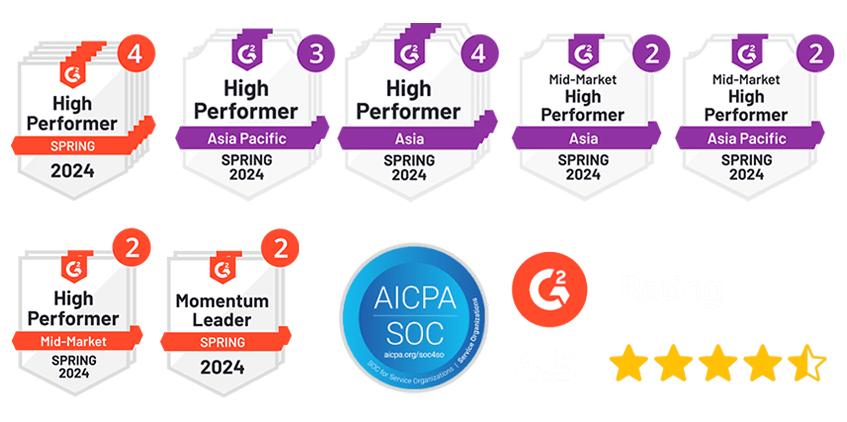The global intelligent process automation market will reach $30 billion by 2030, growing at approximately 13% annually. Agentic Process Automation (APA) represents a fundamental shift in how businesses approach automation, using large language models to manage and execute complex tasks that require human-like intelligence.
Traditional automation follows predefined rules and stops working when faced with unexpected situations. APA uses AI-driven agents that understand context, learn from outcomes, and make strategic decisions without constant human supervision. This evolution moves businesses from static, rule-based processes to dynamic, intelligent automation that handles intricate tasks and adapts to changing conditions. APA offers practical advantages for your business: more efficient process management, reduced human error, and the ability to free up your team for creative and complex work.
The World Economic Forum reports that intelligent automation could contribute up to $3.7 trillion to the global economy by 2025. Business leaders preparing for 2025 need to understand what agentic process automation is and how it differs from previous automation technologies. This knowledge will be crucial for maintaining your competitive edge in an increasingly AI-driven business environment.
Why Business Leaders Should Care About APA in 2025
Business leaders across industries are recognizing the strategic value of agentic process automation. Gartner predicts that by 2028, 33% of enterprise software applications will incorporate agentic AI to manage complex tasks and workflows. This surge in adoption signals a fundamental shift in how organizations approach automation and process excellence.
The rise of agentic process automation
The trajectory of agentic process automation shows remarkable momentum heading into 2025. According to IBM research, more than 80% of operations executives cite automating global business services as a major strategic imperative. Furthermore, 86% believe that by 2027, process automation and workflow reinvention will be more effective because of AI agents.
This growth isn’t merely speculative. Already, 76% of executives report their organizations are developing, executing, or scaling proof-of-concepts that enable autonomous automation through self-sufficient AI agents. Meanwhile, 75% of executives anticipate AI agents will execute transactional processes and workflows autonomously within the next two years.
What’s driving this rapid adoption? Primarily, APA can handle tasks previously considered too complex or nuanced for traditional automation methods. While rule-based automation depends on static instructions, agentic automation uses generative AI to adapt to changing conditions and unexpected scenarios. Businesses can now fully automate complex end-to-end workflows and address the “long tail” of processes that have not, until today, been automatable.
APA as a competitive advantage
Forward-thinking organizations are turning to agentic AI in business operations to capture a distinct competitive edge. With agentic AI, operations autonomously learn, adapt, and optimize in real time, moving beyond mere efficiency to intelligence that proactively anticipates challenges and drives innovation.
The strategic advantages are substantial:
- Enhanced operational efficiency: Automated processes reduce manual intervention through the capability to handle complex multi-step processes
- Superior decision-making: Real-time data analysis capabilities allow for actionable insights and smarter decisions
- Unprecedented scalability: Businesses can scale operations without proportional increases in resources
- Significant cost savings: APA reduces operational costs and minimizes errors, increasing overall efficiency
These benefits translate directly to business performance. 88% of business executives are increasing overall AI budgets to support the adoption of agentic AI. Most compelling, however, is that 90% of executives believe that by 2027, AI agents will enable business operations professionals to move beyond simple reporting to perform insightful analytics for real-time optimization.
Aligning APA with business goals
For APA initiatives to deliver maximum value, they must be tightly connected to your organization’s strategic objectives.
To achieve this alignment, start by identifying the high-level business strategies discussed in your company’s earnings calls and executive communications. Then, evaluate how APA can support these priorities, whether they involve growing revenue, reducing costs, or improving customer experiences.
Consider that if your organization aims to grow revenue by 20% over the next two years or reduce costs by $100 million, you’ll need to size your APA initiatives accordingly. This top-down approach ensures your automation program delivers meaningful impact rather than just incremental improvements.
A successful approach combines both strategic vision and practical implementation. Establish clear, specific goals that align APA initiatives with organizational objectives. For instance, if enhancing customer satisfaction is the goal, prioritize workflows that improve customer interactions through faster response times or personalized recommendations.
The question isn’t whether to implement agentic process automation but how to use it most effectively to achieve your strategic business objectives in 2025 and beyond.
What is Agentic Process Automation?
Agentic process automation represents the next evolution in business automation, powered by AI agents capable of making independent decisions and taking autonomous actions. Unlike traditional automation that follows static rules, APA systems can adapt to changing conditions, learn from outcomes, and make context-aware decisions without constant human supervision.
APA employs AI agents (also called autonomous agents) that form the backbone of this technology. These agents can independently execute complex tasks, interact with business applications, manage APIs, and orchestrate workflows across enterprise systems and teams. They possess the intelligence to handle cognitive tasks that previously required human judgment.
What makes APA different? Agentic process automation can assess data, recognize patterns, formulate new questions, structure processes, and execute work with minimal human intervention. This capability allows businesses to automate complex processes that were previously too unpredictable or non-routine to automate.
How it works in real-world terms
Agentic process automation operates through a structured process framework that enables intelligent action. The system gathers and processes data from various sources, including sensors, databases, and digital interfaces to build contextual understanding. It uses large language models as a reasoning engine to orchestrate decision-making and coordinate specialized models for specific tasks.
Once a plan is formulated, the AI executes tasks by integrating with external tools and software through APIs. The system continuously improves through a feedback loop, refining its models as it processes new information.
Real-world example: In a dynamic supply chain environment, an AI agent can analyze real-time data, identify potential disruptions, and proactively reroute resources to maintain operational efficiency. In customer service, an agentic system can understand a customer’s sentiment in an email and decide whether to escalate the issue to a human agent or respond with an appropriate solution.
APA vs RPA: Key differences
To understand agentic process automation, it helps to compare it with robotic process automation (RPA), which many businesses already use:
| Capability | RPA | APA |
| Intelligence Level | Operates on predefined rules without learning ability | Uses advanced AI that learns from data and adapts autonomously |
| Data Handling | Primarily handles structured data from specific applications | Excels at processing diverse data types in real-time, including unstructured data |
| Decision-Making | Executes tasks based on static rules without decision-making capacity | Makes autonomous decisions using real-time data and context |
| Adaptability | Requires manual updates when processes change | Learns and adjusts behavior autonomously as conditions change |
| Task Complexity | Best suited for repetitive, simple tasks like data entry | Designed for complex, decision-driven processes requiring planning |
RPA is effective for automating straightforward, repetitive tasks that follow predefined rules. APA can handle end-to-end complex processes requiring an understanding of context and making intelligent decisions.
The evolution from RPA to APA doesn’t mean abandoning existing automation investments. APA is designed to complement and enhance existing technologies, integrating with RPA and other automation tools to build a unified Intelligent Automation ecosystem.
From RPA to APA: The Evolution of Automation
The automation landscape has evolved dramatically over the past decade, moving through distinct phases of technological sophistication. This evolution represents fundamental shifts in how automation technologies function and the value they deliver to businesses.
Phase 1: Robotic Process Automation (RPA)
RPA emerged as a game-changing technology in the early 2010s, enabling businesses to automate repetitive, rule-based tasks without extensive programming knowledge. At its core, RPA functions as a digital worker that mimics human interactions with digital systems, following predefined rules to execute tasks with precision and consistency.
The key strength of RPA lies in its ability to handle structured data with remarkable efficiency. RPA bots interact with applications through their user interfaces—clicking buttons, entering data, and copying information just as a human would, albeit with greater speed and accuracy. This made RPA particularly valuable for high-volume, repetitive tasks that follow consistent rules.
However, RPA comes with notable limitations:
- Rule-based and brittle: Changes in layout, format, or system UI break bots
- Lack of context: Bots don’t “understand” what they’re doing
- Not decision-capable: Cannot approve, reject, or escalate intelligently
- No memory: Bots don’t learn from past interactions or errors
Despite these constraints, RPA implementations have achieved return on investment figures ranging from 30% to 200% within the first year of deployment. These impressive returns typically come from reduced processing times, improved accuracy, and the reallocation of human workers to higher-value activities.
Phase 2: Intelligent Automation (IA)
Organizations began encountering the limitations of traditional RPA, prompting technology providers to develop more flexible automation solutions. Intelligent Automation represents the next evolutionary step, combining RPA with artificial intelligence (AI) and machine learning (ML).
Unlike RPA’s focus on rule-based tasks, IA enables systems to learn, adapt, and even make decisions. IA harnesses technologies such as:
- Computer vision for interpreting visual information
- Natural language processing for understanding human language
- Machine learning for pattern recognition and adaptation
- Generative AI for content creation and insights
The fundamental difference between RPA and IA becomes evident in their capabilities:
- RPA: Follows fixed rules, is limited to structured data, and lacks decision-making abilities
- IA: Adapts to changes, handles unstructured data, and makes decisions based on analysis
For instance, where RPA might fill forms with predefined data, IA could analyze customer behavior and recommend personalized services. This integration of cognitive abilities enhances both efficiency and decision-making, often resulting in efficiency gains of 40-60%.
Phase 3: Agentic Process Automation (APA)
Most recently, we’ve witnessed the emergence of Agentic Process Automation—a fundamental shift from rigid, rule-based automation toward flexible, context-aware AI agents that can dynamically adapt to complex business environments.
APA combines the structured reliability of RPA with the contextual adaptability of large language models. Unlike previous automation technologies, APA systems operate autonomously, learning from data and adjusting to new situations without human intervention.
The defining characteristics of APA include:
- Autonomy and reasoning: AI agents that perceive their environment, make decisions, and take actions to achieve specific goals
- Context awareness: Understanding broader goals and reasoning through situations
- Self-correction: Adapting strategies when faced with unexpected situations
- Tool orchestration: Seamlessly working with existing systems and applications
Where RPA followed fixed paths through digital workflows and IA could evaluate conditions and select appropriate actions from predefined options, APA can break down complex problems, explore multiple paths to a solution, and self-correct when faced with unexpected situations.
This transition from RPA to APA represents a monumental leap, moving from simply following rules or interpreting data to systems that understand broader goals, reason through situations, and adapt their strategies to achieve desired outcomes.
How Agentic Process Automation Works
Every agentic process automation system operates through a sophisticated framework that enables AI agents to perform complex tasks autonomously. Here’s how this technology works through its five core mechanisms.
1. Task interpretation using natural language
APA begins with natural language processing (NLP) that allows systems to understand human instructions. Traditional automation requires structured inputs and specific commands. APA interprets tasks through conversational language. The system receives high-level instructions, such as “generate a monthly sales report and email it to the leadership team,” and translates these into actionable plans. This natural language understanding enables business users to interact with automation systems without technical expertise, simply describing what they need accomplished.
2. Workflow construction and planning
Once the system understands the goal, it breaks down complex tasks into manageable subtasks through a process called task decomposition. The AI agent determines which systems to access (CRM, ERP, email), what data is required, and the order of task dependencies.
This multi-step reasoning enables the system to create dynamic plans rather than following rigid, predefined paths. The AI agent maps out the entire workflow before execution begins.
3. Tool and API integration
APA systems execute tasks by connecting with external tools, applications, and services through APIs and RPA capabilities. This integration allows agents to extract data from databases, trigger software actions, update records, and send communications. The system can orchestrate processes across multiple platforms simultaneously, functioning as the connective tissue between enterprise systems. Through these integrations, APA enables AI agents to not just understand business needs but actively shape outcomes by performing real-world actions.
4. Real-time decision-making
Agentic automation thrives on autonomous decision-making powered by AI. The system processes diverse data sources—structured databases, unstructured emails, or social media—to create a unified information pool. Machine learning algorithms analyze this data to identify patterns and anomalies. Based on this analysis and predefined rules, AI agents make informed decisions, assess context, prioritize tasks, and respond with appropriate next steps.
5. Continuous learning and self-improvement
What sets APA apart is its capacity for ongoing improvement without human intervention. The system employs feedback loops to evaluate outcomes and refine algorithms. Through machine learning techniques like reinforcement learning, AI agents collect performance data after each task, identify areas for improvement, and adjust processes for better results. This self-optimization creates an ever-evolving system that becomes increasingly effective at handling complex business processes over time.
Key Capabilities of AI Agents in APA
Image Source: Encord
AI agents in agentic process automation possess specific capabilities that make them effective for complex business processes. These capabilities determine how well APA systems can handle real-world business challenges and deliver measurable results.
1. Autonomy and reasoning
AI agents operate independently without requiring constant human oversight. They can break down complex goals into smaller, manageable tasks and execute them without step-by-step instructions. Their reasoning abilities allow them to analyze business situations, evaluate multiple options, and determine the best course of action based on current conditions.
Unlike traditional automation that stops when it encounters unexpected situations, AI agents actively plan solutions and adjust their strategies to achieve desired outcomes. For example, if a customer service AI agent encounters a complaint that doesn’t fit standard categories, it can analyze the situation, determine the appropriate response, and escalate to human agents when necessary.
2. Context awareness and memory
AI agents maintain context across entire workflows, remembering information from previous interactions and using it to make better decisions. This contextual understanding enables them to recall customer preferences, previous actions, and organizational data to provide more personalized and effective responses.
This memory capability allows AI agents to handle exceptions intelligently. If a payment processing agent notices that a customer typically pays invoices within specific timeframes, it can adjust reminder schedules accordingly. The agent can also reference previous interactions to avoid repetitive communications and provide more relevant follow-up actions.
3. Multi-agent collaboration
Modern APA systems deploy specialized agents that focus on specific business functions while communicating with each other through standardized interfaces. This specialization creates better efficiency and allows for more complex process management.
For instance, in accounts receivable management, different agents might handle invoice generation, payment tracking, customer communications, and collection activities. Each agent specializes in its area while sharing information with others to create a coordinated workflow that addresses the entire customer payment cycle.
4. Tool usage and orchestration
AI agents connect with existing enterprise applications through APIs, app connectors, and integration capabilities. This integration enables real-time data sharing across platforms, creating seamless processes that bridge previously disconnected operations.
These agents can manage complex workflows that span multiple tools, departments, and stakeholders. For example, an AI agent handling expense approvals can pull data from expense management systems, check budget allocations in ERP systems, send notifications through email platforms, and update financial records—all while maintaining accuracy and compliance with organizational policies.
Benefits of Agentic Process Automation
Image Source: Microsoft Dynamics 365 Partners
The tangible business outcomes of agentic process automation (APA) extend across multiple dimensions of organizational performance, creating substantial value for forward-thinking companies in 2025.
1. Improved efficiency and speed
APA dramatically enhances operational efficiency by automating complex workflows that were previously too challenging for traditional automation systems. AI agents handle tasks autonomously, enabling organizations to process workflows faster with minimal human intervention. This automation of complex end-to-end processes eliminates bottlenecks, reduces manual oversight, and allows employees to concentrate on core business activities that add greater value.
2. Greater flexibility and adaptability
What makes APA particularly valuable is its remarkable flexibility. Rule-based systems require manual adjustments when conditions change. APA employs AI agents capable of real-time decision-making based on changing conditions. This adaptability ensures automated processes remain effective even as variables fluctuate, maintaining optimal performance without constant human oversight. For instance, in retail, APA can dynamically adjust inventory levels based on real-time sales data.
3. Cost savings and reduced errors
Minimizing manual intervention and reducing errors helps organizations achieve significant cost savings. In Spain, 29% of companies have increased performance and profits through investments in AI and automation. Automated validation and quality checks ensure data accuracy throughout processes, preventing errors from cascading through operations. These improvements lead to measurable reductions in operational costs while enhancing service quality.
4. Faster implementation and scaling
Traditional RPA often requires lengthy setup and configuration. APA enables quicker deployment through automated workflow construction. This accelerates return on investment and allows organizations to scale operations without proportional increases in resources. The technology’s inherent adaptability supports business growth without requiring extensive reworking of processes.
5. Empowered human workforce
APA frees your team from repetitive tasks, allowing them to focus on strategic, creative work that truly benefits from human thinking. This shift improves job satisfaction and psychological empowerment, with research showing that empowered employees perceive themselves as more effective.
The Future of Business Process Automation
Business process automation is entering a new phase that will reshape how organizations operate, make decisions, and allocate human resources. This shift requires practical preparation and strategic planning to capture its full potential.
Human-AI collaboration models
The future workplace isn’t about replacing humans with machines but creating effective partnerships that use each party’s strengths. Research shows human-AI combinations perform better on creative tasks while AI alone often excels in data-intensive operations. Three collaboration models are proving most effective: Augmented Creativity, where AI enhances human ideation; Hybrid Decision Systems, where AI assists human judgment through predictive insights; and Oversight-Driven Automation, where humans maintain control over automated processes. Digital workers handle routine operations, freeing human employees to focus on strategic thinking and innovation.
Ethical and regulatory frameworks
Greater autonomy brings increased responsibility. Agentic AI amplifies traditional risks due to reduced human interaction. Organizations must establish clear policies defining AI oversight responsibility and implement technological guardrails, including secure sandboxes and security measures. As regulations like GDPR and the EU AI Act evolve, businesses need governance frameworks that monitor performance and ensure accountability. These frameworks should balance innovation with ethical considerations, including data privacy, bias prevention, and appropriate human intervention.
APA as a foundation for enterprise AI
Multiple AI agents working in orchestrated systems will become standard practice. These digital workers will handle increasingly complex functions, evolving from content generators to autonomous problem-solvers. The most effective organizations will balance human and enterprise agents in governed environments, with APA handling routine operations while specialized AI delivers strategic insights.
Predictions for the next 5 years
By 2028, Gartner predicts 15% of day-to-day work decisions will be made autonomously through agentic AI. The market is projected to grow from USD 1.40 billion in 2020 to USD 12.60 billion by 2025, with 70% of organizations implementing some form of agentic AI. Organizations adopting this technology can achieve ROI up to 300%, primarily through enhanced efficiency, improved decision-making, and reduced costs. To see agentic workflows and AI voice agents in action, schedule a call with Peakflo experts today.
How Peakflo Powers Agentic Process Automation
Peakflo delivers agentic automation purpose-built for finance and operations teams. Its platform combines self-improving workflows with autonomous voice agents, enabling businesses to automate everything from invoice-to-cash to procure-to-pay, without writing a single rule or script.
With Peakflo, users simply record their current workflows with voice instructions. The AI then breaks down tasks, builds a workflow, and executes actions like invoice processing, approvals, anomaly detection, and reconciliations—integrating directly with ERPs and business systems. Over time, these workflows self-optimize based on exceptions and outcomes.
Peakflo’s AI voice agents handle routine outreach via phone, WhatsApp, or SMS, speaking multiple languages and syncing responses back into ERP systems. Whether it’s collecting payments, updating order status, or resolving queries, the system works 24/7, so your team can focus on strategic initiatives.
See Peakflo’s agentic workflow and AI voice agents in action—schedule a personalized demo today.
Conclusion
Agentic Process Automation represents a significant shift in how businesses approach automation by 2025. Traditional automation follows rules and stops working when faced with unexpected situations. APA brings intelligent decision-making to your workflows, using autonomous AI agents that understand context, make decisions, and adapt to changing conditions. These capabilities translate directly to measurable business outcomes—faster processes, greater adaptability, significant cost savings, and freedom for your team to focus on strategic priorities rather than routine tasks.
Forward-thinking organizations already recognize this opportunity, with executives across industries allocating resources to develop and scale APA initiatives. APA will define the competitive landscape over the next five years. Companies that embrace this technology early stand to gain substantial advantages in operational efficiency, decision quality, and innovation capacity.
The question facing business leaders today isn’t whether to adopt agentic process automation but how quickly you can integrate it into your strategic vision.
FAQs
Q1. What is Agentic Process Automation (APA), and how does it differ from traditional automation?
Agentic Process Automation is an advanced form of automation that uses AI agents capable of making independent decisions and taking autonomous actions. Unlike traditional automation that follows static rules, APA systems can adapt to changing conditions, learn from outcomes, and make context-aware decisions without constant human supervision.
Q2. How can Agentic Process Automation benefit businesses?
APA offers several benefits, including improved operational efficiency, greater flexibility and adaptability to changing conditions, significant cost savings through error reduction, faster implementation and scaling of processes, and empowerment of the human workforce by freeing them from repetitive tasks to focus on more strategic work.
Q3. What are the key capabilities of AI agents in Agentic Process Automation?
AI agents in APA possess capabilities such as autonomy and reasoning to make independent decisions, context awareness and memory to maintain information across workflows, multi-agent collaboration for specialized tasks, and tool usage and orchestration to integrate with existing enterprise applications.
Q4. How does Agentic Process Automation work in practice? APA works through a structured process that includes task interpretation using natural language, workflow construction and planning, tool and API integration, real-time decision-making based on data analysis, and continuous learning and self-improvement through feedback loops.
Q5. What does the future hold for Agentic Process Automation? The future of APA involves evolving human-AI collaboration models, the development of ethical and regulatory frameworks, its role as a foundation for enterprise AI, and significant market growth. Predictions suggest that by 2028, 15% of day-to-day work decisions will be made autonomously through agentic AI, with 70% of organizations implementing some form of this technology.









![Why AI Sales Calls Are Making Good Sales Reps Even Better [2025 Guide] ai sales calls](https://cdn-kmjmp.nitrocdn.com/YvtqmrsiHUxqerlSiZgbfzqqTARWTElr/assets/images/optimized/rev-834053b/blog.peakflo.co/wp-content/uploads/2025/09/65168cf6-3001-4733-8cbc-12d5684cf449-218x150.webp)







